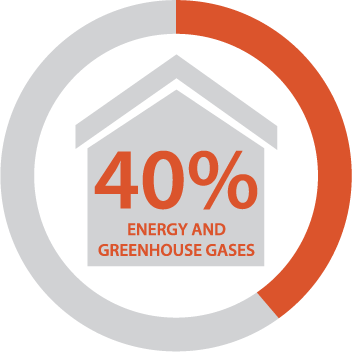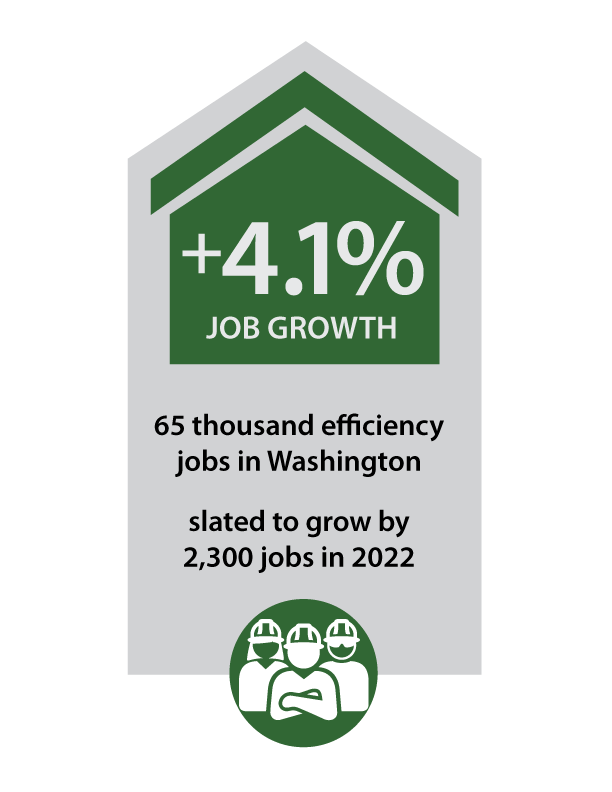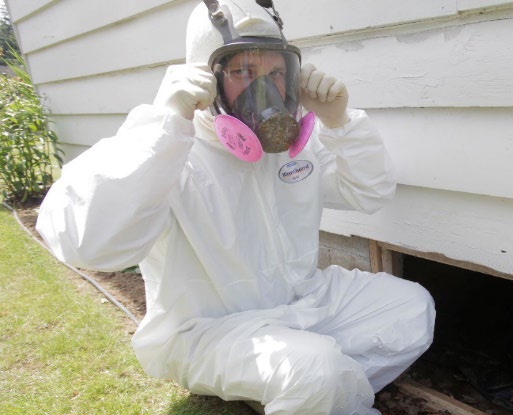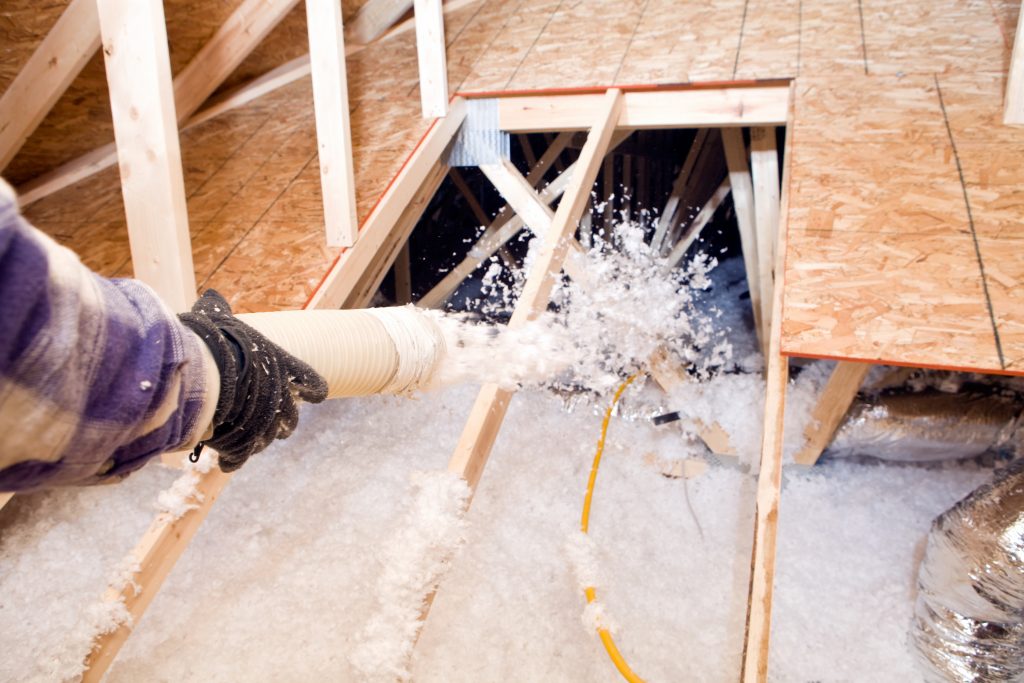installer
Becoming a Home Performance Installer/Technician:
Entry-level technical opportunities that support a clean energy future.

The Industry
Homes and buildings account for around 40% of all energy used in the U.S. and they generate a similar proportion of greenhouse gas emissions.[1] In the race to drive down energy use and reduce emissions, the home performance industry deploys a wide range of strategies: applying highly-efficient building and home designs; advanced construction and retrofitting techniques; and using energy efficient technology and systems to reduce energy consumption and decrease costs to home owners and renters.
In the U.S. more than 2.3 million people work some or all of their time on building energy efficiency technologies and services.[2] In Washington, there are around 65 thousand efficiency jobs, and the sector is slated to grow by 2,300 jobs in 2022 (4.1%).[3] More than half of all energy efficiency jobs are in construction, where one in every five jobs deal with products and services proven to save energy.
By reducing harmful emissions and improving air quality, home performance projects can enhance occupant health and safety, and contribute to overall comfort. Home performance and efficiency also addresses the need for greater social and economic justice: Providing direct services helps to improve livability and reduce energy burden for low-income occupants, communities of color and other underserved populations, who typically spend a disproportionate amount of their incomes on home energy.
The Job
Home performance installer/technicians perform a variety of activities that weatherize homes and make them more energy efficient. Activities include applying vapor barriers and insulation material like loose, blanket, board, and foam in attics, crawl spaces, basements, and walls; sealing air ducts, combustion air openings, or ventilation openings to improve heating and cooling efficiency; installing weather stripping around windows and doors; and adding insulation around water lines and hot water heaters.
The job is very physical and requires frequent standing, sitting, lifting, crouching, repetitive movements, and crawling in tight spaces. Installer/technicians regularly use common hand and power tools, ladders and other specialized equipment to perform weatherization work. Prior experience working in construction and knowledge of buildings is helpful.

Homes and buildings account for around 40% of all energy used in the U.S. and they generate a similar proportion of greenhouse gas emissions.

In Washington, there are around 65 thousand efficiency jobs, and the sector is slated to grow by 2,300 jobs in 2022 (4.1%).

Wage data for Washington shows annual earnings for a home performance installer/technician can range from under $29,000 to $74,000 or more…
Pay and Benefits
Wage data for Washington shows annual earnings for a home performance installer/technician can range from under $29,000 to $74,000 or more, depending on experience, job sector and employer.[4] Recent compensation data from regional community action agencies that operate low-income weatherization programs in Washington, show that installer/technicians earned an average hourly wage of $18.50 ($38,480 annually) in 2021.[5] Regular employees also receive health care and retirement benefits. Installer/technician pay and benefits generally increase with experience, and total compensation offered by private-sector employers are often higher than public-sector employers.
Interests and Traits
Installer/technicians work activities include addressing practical, hands-on problems and finding solutions to make residential buildings more energy efficient and safe. Nearly all jobs require working outdoors and inside of homes, in basement crawl spaces and attics, often in confined areas. Installers use a variety of basic hand and power tools, insulation blowers, common and specialty construction materials and techniques in their work. The work is physically demanding and usually requires use of personal protective equipment such as masks and respirators, goggles and protective suits. The job requires attention to detail and following set procedures and routines that optimize work productivity and meets quality standards. Dependability, a strong work ethic, being safety-minded, and having good social skills are also important personal qualities and traits for employers who hire installer/technicians.
Education and Training
At the entry-level, installer/technicians are typically not required to have a specific degree or coursework, but a high school diploma or GED is usually preferred or required. Some positions and employers may require related vocational courses in combination with related experience. Some states may require additional classes and certifications related to safety and hazardous material handling. Installer/technicians often learn their trade through on the job experience or mentorship with a skilled contractor. Additional education, training and certification is essential to advancement into other energy efficiency-related occupations and careers.

Installer/technicians work activities include addressing practical, hands-on problems and finding solutions to make residential buildings more energy efficient and safe.

With their foundational experience, installer/technicians have a comprehensive understanding of the work and the energy efficiency business that makes them very competitive in the job market.
A highly interactive tool that explores an industry exploding with job opportunities across four major sectors of the green buildings and energy efficiency industry.
Employers
Typical employers of installer/technicians include government agencies, electric and gas utilities, local non-profit organizations, engineering and environmental consulting firms, property management firms, and thousands of private-sector companies that perform technical work and provide related services and administrative support. Home performance employers typically work together as part of a network of energy efficiency specialists to provide services across the U.S. and in every region of the state. Washington’s low-income weatherization program, for example, is administered by the state and operates through local governments, non-profit agencies and utility partners, who use federal and state funds to deliver efficiency services to low-income individuals and families who are unable to afford these services on their own. Installer/technicians and associated skills and worker productivity play a key role throughout the weatherization program cycle.
Career Opportunity and Mobility
Home performance installer/technicians form the foundation-level workforce for most employers that specialize in energy efficiency and retrofits. With additional work experience and the accumulation of new knowledge, skills and certifications, installer/technicians can build on their experience and become well-positioned to move into leadership roles such as crew leader, or into more technical-analytical jobs such as energy auditor. With their foundational experience, installer/technicians have a comprehensive understanding of the work and the energy efficiency business that makes them very competitive in the job market.
Career pathways for installer/technicians also exist between the different sectors that make up the home performance industry, which means that the knowledge and skills learned through related experience, training programs and in the workplace are also relevant and transferrable to different sectors and jobs across the industry.[6] Installer/technicians can also leverage their experience and skills to find employment in related occupations and in other sectors like new construction, utilities, and manufacturing.
How to find out more about the home performance industry, the installer/technician occupation and related career opportunities:
Resources | Green Buildings Career Map
Building Performance Center – A department of Opportunity Council
Building Performance Institute, Inc. | (bpi.org)
Careers in Green Construction: U.S. Bureau of Labor Statistics (bls.gov)
Explore Careers in Weatherization | Department of Energy
EERE_WAP_Fact-Sheet-v2.pdf (nascsp.org)
https://www.careeronestop.org/
Career Maps – Interstate Renewable Energy Council (IREC) (irecusa.org)
[1] In Washington, buildings currently represent approximately one-fifth of state greenhouse gas emissions, mainly from the direct combustion of natural gas and other fossil fuels in buildings for space heating, water heating and cooking. See: WA_2021SES_Chapter-D-Buildings.pdf
[2] See: 2020 U.S. Energy & Employment Report.
[3] See: https://www.energy.gov/sites/default/files/2021-07/USEER%202021%20State%20Reports.pdf
[4] See: Washington Wages: 47-4011.01 – Energy Auditors (onetonline.org)
[5] Weatherization Wage Dashboard 2021 | Tableau Public
[6] See: The Green Buildings Career Map, Interstate Renewable Energy Council, Career Maps – Interstate Renewable Energy Council (IREC) (irecusa.org)

